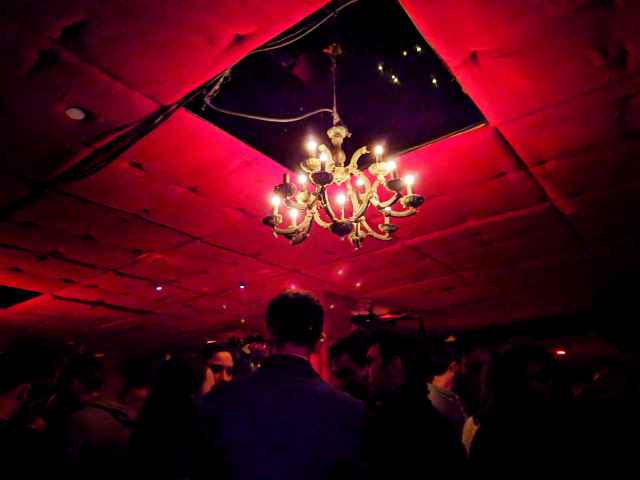

In particular, early New York immersives from 2011 to 2015 tended to eschew site-responsive or outdoor performances and instead modeled their work on the type of open "sandbox" or warehouse model, as Punchdrunk did, or else in the nightclub model begun a decade earlier with The Donkey Show (1999). 2 The immersive theatre trend was not unique to New York City, but it took on unique shapes due to the environment and talent pool of the city. According to American Theatre magazine, similar immersive works had emerged throughout the country by 2013. Joining Punchdrunk in New York were Third Rail Projects ( Then She Fell) and Cynthia Von Buhler's Speakeasy Dollhouse ( The Bloody Beginning, 2011). The UK-based company Punchdrunk and management company Emursive invested in a major, open-run production of Sleep No More in Chelsea in 2011. The current wave of immersive performance in New York City began around 2010 with the work of several dance- and nightclub-based innovators. To these comparisons I add that they share witchy themes. Both have attracted significant internet-based fan followings, and both are frequently contrasted in criticism of New York's immersive scene, due to their roughly contemporary openings, long open-ended runs, and choreographic similarity. Daring audience members are rewarded with intimate, "one-on-one" performances in Sleep No More, and Then She Fell provides many personalized experiences. Sleep No More is a free-for-all, as characters perform predetermined, one-hour tracks across the six-floor, 100,000-square-foot warehouse and audiences pursue whichever of the twenty-some characters they choose.

Then She Fell consists of several audience tracks in which characters lead audience members by ones or twos through three floors of rooms.
Nyc sleep no more like full#
Accompanied by a constant soundtrack, dancer-performers engage each other using a dance vocabulary full of contemporary technique and contact improvisation. However, they are not living storybooks both incorporate other works, such as Sleep No More's quotation of Alfred Hitchcock films, and both take place within fictional institutions of an earlier time: the 1930s-themed McKittrick Hotel and the Victorian hospital Kingsland Ward. 1īoth productions take place in large, designed spaces and are inspired by canonical literary works: Macbeth and Lewis Carroll's Alice stories, respectively. By aligning authoritative witchlike characters with an audience encouraged into childlike exploration and submission, creators of the performances Sleep No More (2011) and Then She Fell (2012) made use of stage witch tropes to introduce a new phase of immersive theatre. As I reflect on the ten-year history of commercially successful and widespread immersive theatre in the United States, I observe that two of the longest-running such experiences in New York City depend on themes of witchcraft.

Powerful female characters ignite my wonder these witches contest "normalcy" with a set of upside-down rules and rituals. As I explore the five-story McKittrick Hotel complex or the corridors of the Kingsland Ward asylum, I lose myself, not knowing what lies behind a curtain, through a door, atop a staircase. Characters enter the room, performing dance sequences solo and in pairs, and I'm drawn to the fantastic among them: covens of witches, White Rabbits, Mad Hatters, Red Queens. I'm surrounded by elaborately designed rooms: an office, a hospital, a boudoir, a cemetery, a hotel lobby. I'm sitting in a darkened room, waiting for someone to show up.


 0 kommentar(er)
0 kommentar(er)
